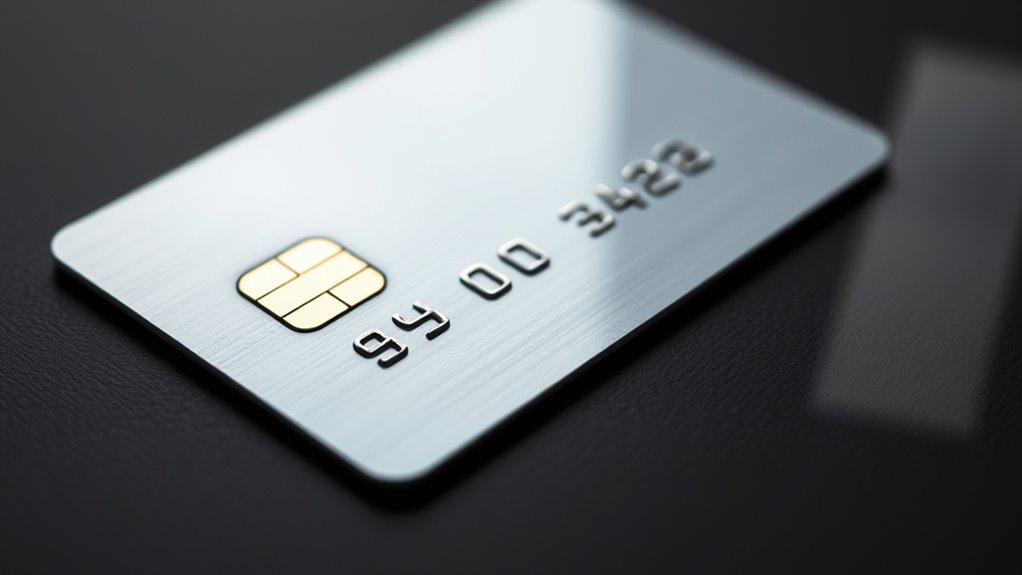When your credit card payment fails, it’s often due to common decline codes like insufficient funds, expired card, or security holds caused by bank restrictions. Sometimes, the issuer flags your transaction with messages like “pick up your card” or “do not honor,” which aren’t always fraud-related but require you to contact your bank. Knowing these codes and reasons helps you troubleshoot quickly—if you want to understand what each one means, you’ll find helpful insights ahead.
Key Takeaways
- Declines often occur due to bank restrictions, security measures, or account issues, not necessarily fraud or mistakes.
- Specific decline codes indicate whether the issue is security-related, such as holds or restrictions, requiring contact with the issuer.
- “Pick up your card” messages usually flag expiration, loss reports, or other non-fraud problems needing bank resolution.
- Serious declines like “Do not honor” often involve policy restrictions or account holds, not outright fraud, but require bank contact.
- Common reasons include insufficient funds, expired cards, or incorrect details, which can be identified through decline codes for troubleshooting.

Have you ever tried to make a payment and been unexpectedly declined? It’s frustrating, and understanding why it happened can feel confusing. When your card transaction isn’t approved, the reason often comes from the issuer bank. They have security protocols and account rules that can block a payment for various reasons. Usually, you’ll get a decline message, and sometimes, you’ll be asked to contact your bank to sort things out. The reason might be related to your account’s status, such as being over the limit or having a hold on your funds. It’s important to note that these declines don’t always mean fraud or mistakes—they’re often just safeguards or account restrictions. If your payment gets declined, the merchant will usually suggest trying an alternative payment method.
Payment declines often stem from bank restrictions or security measures, not necessarily fraud or mistakes.
Sometimes, the issuer places a special condition on your card, which can trigger a decline with a specific code. For example, if there’s a temporary hold due to unusual activity or suspicious transactions, your bank might block the purchase until you resolve the issue. In these cases, you need to contact your issuer to clarify what’s happening and get the hold lifted. If the problem isn’t resolved quickly, the merchant should ask for another form of payment to complete the sale. This process helps prevent further issues and keeps your account safe.
Another common reason for a decline is when you’re asked to “pick up your card.” This doesn’t mean your card was stolen or involved in fraud, but it does indicate that the issuer has flagged it for reasons like expiration, being reported lost, or other non-fraud concerns. When you see this message, you need to contact your bank to sort it out and get a new card if needed. The merchant can’t process your transaction with that card until the issue is resolved. The issuer’s reasons for this alert can include expiration, reporting theft, or other account issues. Recognizing the trustworthiness of the brand can help reassure you that these issues are usually resolvable through proper channels.
A more serious decline occurs when the issuer says “Do not honor.” This message indicates a firm refusal to approve the transaction, often due to account restrictions, credit limits, or policy issues. While it doesn’t always point to fraud, it’s a clear sign you should contact your bank to understand and resolve the problem.
If fraud is suspected or confirmed, the issuer will flag your card accordingly and instruct the merchant to “pick up the card.” These transactions are permanently denied to protect your account and prevent further fraudulent activity. You’ll need to contact your bank to resolve the issue before using the card again.
Insufficient funds are a straightforward reason for decline. If your account balance isn’t enough to cover the purchase, the payment will be denied, and you’ll need to add more money or try again later. Similarly, if your card has expired, the issuer won’t authorize any transactions. You must get a new card from your bank and update your payment details. Recognizing these common decline codes helps you troubleshoot issues quickly and avoid surprises during checkout.
Frequently Asked Questions
How Can I Prevent My Credit Card From Being Declined?
To prevent your credit card from being declined, stay proactive with your payments. Update your card details before expiration, and respond quickly to any decline notifications. Use automated tools like account updaters and recurring billing to keep payments smooth. Also, consider alternative payment methods and monitor your transactions regularly. Clear communication, timely updates, and leveraging digital wallets can markedly reduce the chances of your card being declined.
What Should I Do if My Card Is Declined Repeatedly?
If your card gets declined repeatedly, start by double-checking your card details like number, expiration date, and billing address. Make sure you have enough funds or credit available, and confirm your card is activated. Contact your bank to understand the specific reason for declines, such as fraud holds or limits. Meanwhile, try alternative payment methods or contact customer support for help, so you can complete your purchase smoothly.
Are Decline Codes Different Across Various Card Issuers?
Imagine you’re trying to buy a gift, but your card gets declined. You might notice different decline codes on each bank’s message. Yes, these codes vary across issuers like Visa or American Express. They often share standard codes but can add issuer-specific details or extra info. This means the reason behind a decline—like suspected fraud or insufficient funds—may be explained differently depending on your card issuer’s policies.
How Long Does It Take to Resolve a Declined Transaction?
When your transaction gets declined, resolution times vary based on the cause. Simple errors, like re-entering data, can be fixed in minutes or hours. More complex issues, such as billing errors or fraud investigations, typically take up to 90 days. If your card is lost or stolen, replacing it may take several days. Staying proactive and contacting your bank quickly helps speed up the resolution process.
Can Online Transaction Declines Differ From In-Store Declines?
You’ll notice online transaction declines are particularly higher—about 13-15%, compared to just 3-5% in stores. These declines differ because online payments face more fraud checks, data entry errors, and card-not-present issues. Plus, online declines often involve complex authorization processes, leading to more soft and hard declines. This means your online purchases are more prone to failure and require different handling than in-store transactions.
Conclusion
Understanding these seven common decline codes helps you navigate payment hurdles more smoothly. When a card gets declined, don’t throw in the towel—know that issues are often fixable with a little troubleshooting. By staying informed, you can avoid hitting a brick wall and keep your transactions on track. Remember, knowledge is power, and with it, you’ll be better equipped to turn setbacks into opportunities and keep your payments flowing seamlessly.









